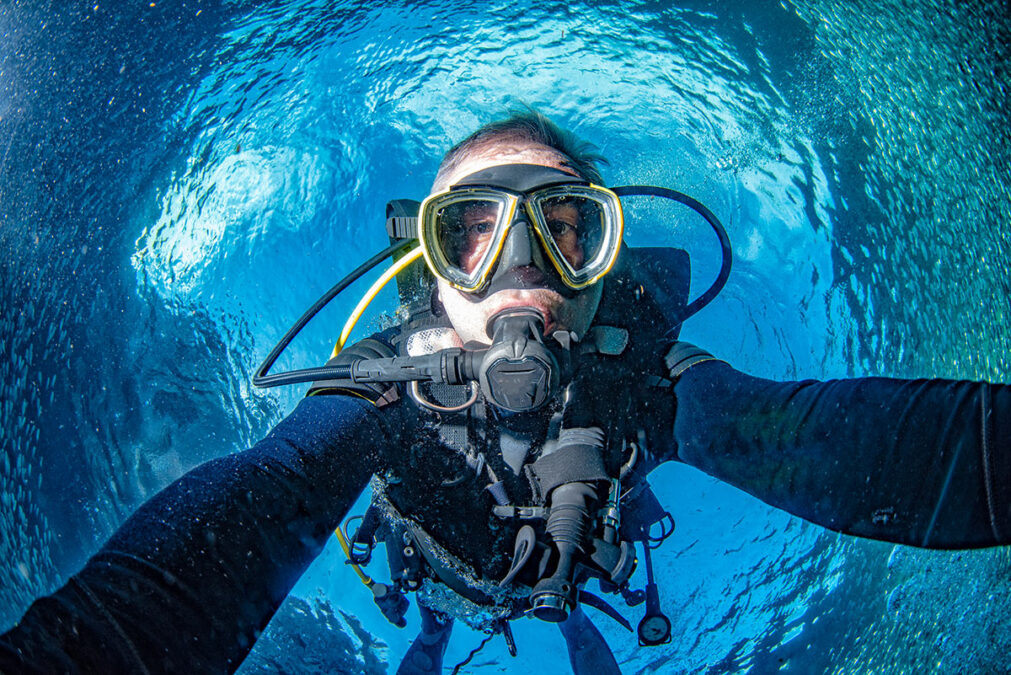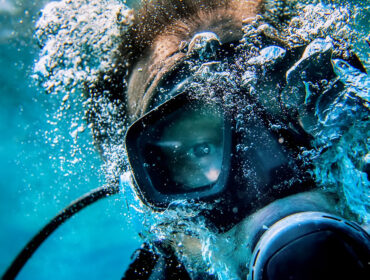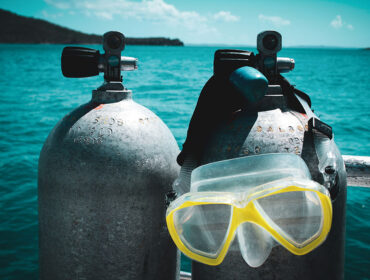One of the first things we are taught while learning to scuba dive is how to spit in our masks before entering the water to prevent the mask from fogging up underwater. Yes some of us have graduated to using baby shampoo or other commercially available defogging agents, but the most widely used and most easily available solution to a foggy mask is the good ‘ol fashioned spit and rub of the insides of your dive mask. Ever wonder what makes ordinary saliva so effective against fogging of masks?
Before we get to how spit works in this scenario, let’s take a closer look at why a scuba mask fogs up in the first place. A Scuba mask fogs up when the inside of the lens is at a temperature below the dew point of the air inside the mask. This drop in temperature causes water to condense on the inside of the glass lens forming tiny droplets causing the fogging. The surface of the glass in your mask is potholed or riddled with microscopic depressions, almost like a golf ball or the surface of the moon when magnified under a microscope. Moisture is attracted to this uneven surface and adheres to the front, causing the fogging similar to what we experience on our car windshields on a cold day. Decreasing the surface tension of these water droplets and creating a moisture film prevents fogging.
So, how does Spit help in defogging a mask? Saliva acts as a surfactant. Surfactants are wetting agents that lower the surface tension of a liquid, allowing easier spreading. Surfactants prevent water droplet formation and cause the water to break up and spread easily. The term surfactant is a blend of the words surface acting agent. As a surfactant, saliva decreases the surface tension of the droplets. The water from the condensation does not mound up as beads or droplets but, instead, breaks to form bigger droplets that just roll away into the mask. So, the water condensation on the insides of the mask doesn’t adhere to the glass but instead breaks up and rolls down into the mask itself, giving the scuba diver clear vision.
Ok so why use Spit when there are so many types of surfactants available? Well, simply because it’s the most conveniently available surfactant, and it works really well, too. Spit, being a natural bodily fluid, also doesn’t irritate the divers eyes, unlike a detergent or soapy liquid, which could sting. You could just as easily use shampoo, detergents, toothpaste, soaps, alcohols, or glycerin, all used by divers as a spit alternative to the same effect. You could also purchase manufactured defogging solutions. But spit is free, plentiful, and doesn’t require a wetsuit with pockets to carry around!




